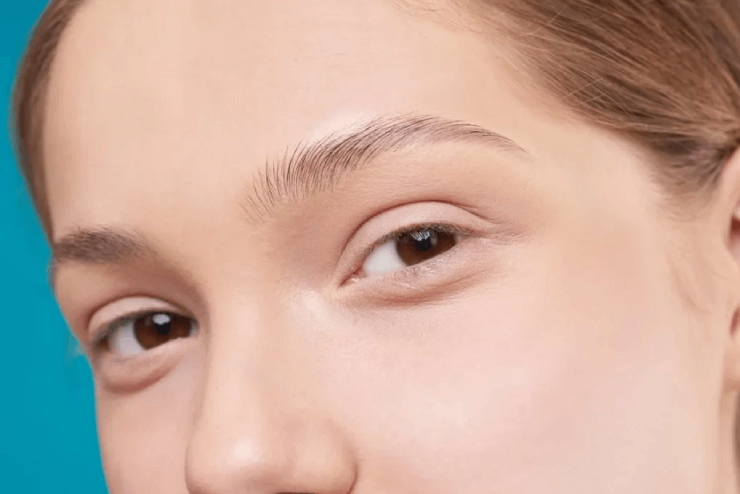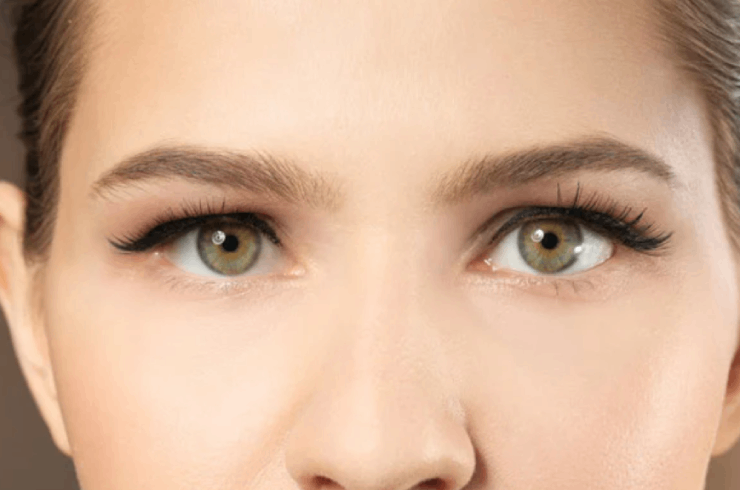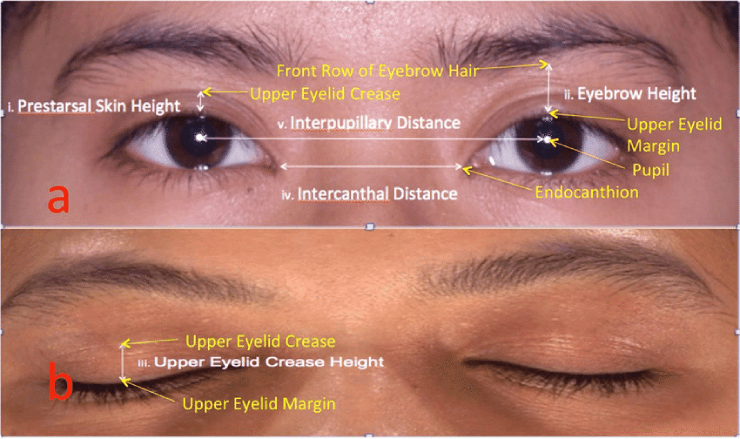Journal
Importance of Eyelid Types, Height, and Thickness for Eyelid Surgery in Korea
2023-12-01
Eyes
The eyes are considered to be the windows to the soul and one of the first things people notice about a person’s face. Everyone has beautifully diverse eyes of various shapes, sizes, and colors. In this article, we will discuss how eyelid type, height, and thickness should be evaluated when performing eyelid surgery in Korea.
Eyelid Types
Monolids
A monolid, also known as an epicanthic fold, is an eyelid shape that doesn't have a crease. It is called “mono” because people with monolids appear to have one eyelid fold rather than a double. The skin of the upper eyelid covers the inner part of the eyes, which means no fold divides the eyelids into two parts. Monolids are most seen in people of East Asian descent. In some cases, it can make the eyes look more prominent and, in some, a narrower appearance.
Monolids are most common among Chinese, Korean, Japanese, and Mongolian people. While scientists do not fully understand why Asian people have developed the monolid genes, the theory is that monolids gave people living in cold and windy climates an adaptive advantage, offering better eye protection.

Double Eyelids
The double eyelid is when there is a visible fold or crease over the eyelids. The eyelid looks as if it's divided into two sections, hence the name “double lid.” Many Asian cultures associate double eyelids with beauty because double eyelids appear more defined and give greater expressiveness.

Hooded Eyelids
When one has a hooded eyelid, also known as dermatochalasis, the skin covers the eye crease partially or entirely, giving it a hooded look or making the eyelids look petite. The skin below the eyebrow comes close or touches their eyelashes. Hooded eyelids are primarily genetic, but can naturally develop as one ages and skin starts to sag. Some people may find that it can obscure their vision.

Different Types of Eyelid Crease Height
The eyelid crease height indicates the position of the crease relative to the base of the eyelashes. It is the distance from the upper eyelid margin to the upper eyelid crease.

The crease height is different for all ages, genders, ethnicities, and genes. For example, males usually have about 6mm to 8mm above the eyelid margin, while women have around 8mm to 10mm crease distance. We will go more in-depth about the three types of eyelid crease height: low, medium, and high.
Low Crease
The height of a low crease usually ranges from 5mm to 6mm above the eyelash line. This is the most common crease height among Asians who are born with a crease. As it is the most naturally occurring crease, it is also the most natural-looking height when done surgically on Asian eyes.
Medium Crease
The medium crease usually extends from 7mm to 9mm above the eyelash. This crease height is less commonly seen in Asian descendants, so it may look unnatural if they get it surgically done, especially if they have naturally small, shaped eyes. If they have rounder-looking eyes, it may look natural. Those with medium-height creases usually have a more prominent crease and open-eyed appearance.
High Crease
A high crease can reach up to 9mm or above. Having a high crease is commonly perceived as attractive because it has the effect of having big eyes. In many cultures, large eyes are seen as beautiful and a sign of youthfulness.
Thickness of Skin
When considering Korean eyelid surgery, one of the most important factors to evaluate is the thickness of the eyelid skin. There are thin, medium, and thick areas on the skin region. Different ethnicities have different skin thicknesses. Asians and black skin generally have thicker skin because darker skin types have more cornified cell layers and greater lipid content.
Asian eyelid skin tends to be thicker while having shorter or smaller elevating muscles. Therefore, when performing double eyelid surgery on Asians, it is important to fix the eyelid skin to the lower or medium eyelid skin. If placed too high, it can cause puffy-looking eyelids.

Other ethnicities tend not to have thick skin on their eyelids. However, over time, the ultraviolet rays (UV) from the sun, damage the fibers in our skin called elastin. With the breakdown of the elastin fibers, it causes the skin to sag, stretch, and lose its ability to snap back. The lighter your skin, the less collagen and elastin you have, which causes the skin to sag earlier.
With that being said, when your skin starts to sag on the eyelid regions, there are several procedures to help you look more youthful.
Upper Blepharoplasty
Upper blepharoplasty aims to improve the drooping and sagging skin on the upper eyelids. This eye surgery targets excess skin, muscle, and fatty tissues that may contribute to a tired or aged look. Upper blepharoplasty is sought by individuals who wish to improve both aesthetic concerns, but also functional aspects related to vision obstruction. A droopy eyelid may cover your vision, which can result in discomfort and deeper wrinkles on the forehead area.
Lower Blepharoplasty
Lower blepharoplasty is an eye surgery designed to enhance the appearance of the lower eyelids. It addresses the concerns of under-eye bags, wrinkles, and excess skin. This surgery is great for those who want to reduce signs of aging and achieve a more youthful appearance.
Sub-brow Lift
Sub-brow lift surgery is also recommended for individuals who seek to improve sagging eyes. It lifts your upper eyelids and improves the heaviness of the eyes. With age, our eyebrows also begin to droop, which can give an angry or tired appearance. The difference between upper blepharoplasty and sub-brow lift is that while they both focus on improving the saggy skin and making you look more youthful if you also wish to create a double eyelid crease or a new crease, upper blepharoplasty is more suitable.
In conclusion, the eyes hold a unique significance in facial aesthetics, with their diverse shapes, sizes, and colors contributing to the individuality of each person. Understanding the intricacies of eyelid types, including the height and thickness is crucial when considering eyelid surgery, particularly in the context of Korea’s cosmetic procedures. This article has shed light on the importance of a thorough evaluation in tailoring surgical interventions to the specific needs of each individual. Recognizing and respecting the unique characteristics of one’s eyelids is paramount for achieving successful and harmonious outcomes in eyelid surgery. By doing so, individuals can enhance their natural beauty while preserving the distinctiveness that makes their eyes a captivating aspect of their overall appearance.
Back


